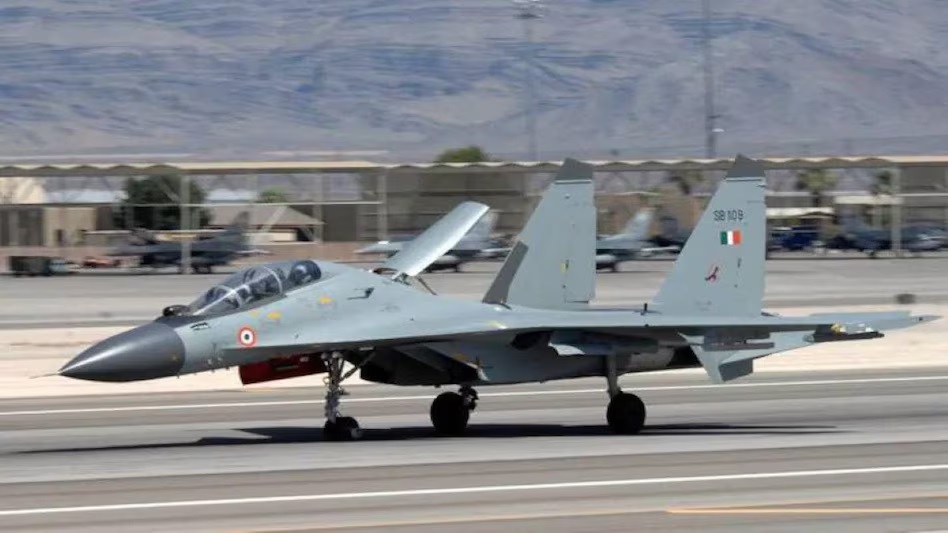Russia Offers 50 More License-Produced Su-30MKI Jets To India

In a renewed effort to strengthen military ties and enhance air capabilities, Russia has offered India an additional 50 Su-30MKI fighter jets to be produced under license. This comes on the heels of India's recent steps toward modernizing its fleet, including the production of new engines for its Su-30MKI aircraft and a deal for 12 new jets. The proposal signals a deepening of the already long-standing defense collaboration between Russia and India, which has seen continuous cooperation on the Su-30MKI program since the early 2000s.
A Closer Look at the Su-30MKI
The Su-30MKI is a twin-seat, multi-role fighter aircraft specifically designed by Russia for the Indian Air Force (IAF). Notably, the “MKI” in the designation refers to “Modernizirovannyi Kommercheskiy Indiski,” or “Modernized Commercial for India,” highlighting its customized nature. These fighters boast advanced avionics and weapon systems and are known for their remarkable agility, superior range, and all-weather capabilities.
This aircraft, first inducted into the Indian Air Force in 2002, remains one of the most versatile and potent platforms in India's arsenal. With a length of 21.9 meters, a wingspan of 14.7 meters, and a height of 6.4 meters, the Su-30MKI can carry a massive payload, up to 8,000 kg on 12 hardpoints.
One of the standout features of the Su-30MKI is its use of thrust vectoring, making it one of the most manoeuvrable fighters in its class. Equipped with two AL-31FP afterburning turbofan engines, each delivering up to 122.58 kN of thrust, the fighter can execute complex aerial manoeuvres with remarkable precision. The plane’s combat radius reaches up to 3,000 km, and with aerial refuelling, it extends significantly, making it an invaluable asset in both defensive and offensive missions.
In terms of electronics, the Su-30MKI is fitted with the H011 "Bars" phased-array radar, capable of tracking multiple air and ground targets simultaneously. The aircraft also has an optical location system (IRST) combined with a laser rangefinder, allowing it to engage targets without the use of radar, thus reducing its detectability. Its weaponry is formidable, featuring a combination of air-to-air and air-to-ground missiles, laser-guided bombs, and a 30mm GSh-30-1 autocannon. Notable among its armaments is the Astra air-to-air missile, with an impressive 350 km range, making the Su-30MKI a powerful force in both air superiority and ground attack roles.
Expanding India’s Fleet: The Offer of 50 More Su-30MKIs
Russia’s offer of 50 more Su-30MKI fighters is an extension of a decades-long partnership between the two nations. As of now, Hindustan Aeronautics Limited (HAL), which has been licensed to assemble these jets since 2000, has produced over 260 Su-30MKI aircraft for the Indian Air Force. The current offer would increase the number of these fighters in India’s fleet and possibly introduce several upgrades.
In tandem with the expansion, Russia is also offering a modernization package, suggesting that these new aircraft could incorporate advanced features from the Su-30SM2 variant—an evolution of the Su-30 platform. This would likely include more powerful engines, advanced avionics, and radar systems, bringing them closer in capability to Russia’s Su-35S fighters. Such upgrades could significantly enhance the operational lifespan of the Su-30MKI, extending it into the 2050s.
HAL’s New Role: Delivering the Next-Gen Engines
India has already taken a big step in self-reliance when it comes to Su-30MKI engines. In September 2024, HAL delivered the first locally produced AL-31FP engine, marking a major milestone in indigenous defense production. This is part of a $3.1 billion contract that mandates the production of 240 such engines over the next eight years. The Sukhoi Engine Division plant in Odisha has been outfitted with cutting-edge technology to manufacture these engines, which will serve as the backbone of India’s Su-30MKI fleet.
The production of these engines is crucial not only for India’s current fleet but also for the proposed expansion. Each new Su-30MKI aircraft will likely be fitted with these locally produced engines, ensuring that India can maintain and upgrade its fighters without dependence on foreign suppliers.
Strategic Importance: A Regional Power Play
The offer of 50 more Su-30MKI jets comes at a critical time for India, as it seeks to enhance its air power to counter regional threats. The Su-30MKI has been a backbone of the Indian Air Force, capable of both air dominance and ground attack missions, and has played a key role in several strategic operations. Expanding and modernizing this fleet will allow India to maintain a strong deterrent posture, especially with the growing presence of China and Pakistan in the region.
Moreover, India’s involvement in producing components for these fighters makes the collaboration with Russia more than just a buyer-seller relationship. It signifies India’s ambition to become a key player in defense manufacturing, potentially even exporting defense equipment in the future.
Russia, on the other hand, benefits from India’s reliable partnership. Despite facing international sanctions, Russia continues to find a significant market in India, particularly for its defense technology. The ongoing cooperation allows Russia to maintain a foothold in one of the world’s largest defense markets.
Looking Ahead
The potential deal for 50 more Su-30MKI fighters, along with the continued production of engines, signals a robust future for India’s air defense capabilities. As the Su-30MKI remains an integral part of the Indian Air Force’s strategy, its modernization will likely keep it relevant for decades to come.
In an era of rapidly evolving defense technologies, the Russia-India Su-30MKI collaboration serves as a prime example of how strategic partnerships can adapt and thrive, benefiting both nations in their pursuit of military readiness and global influence.


